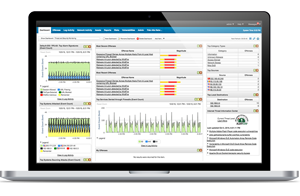Application Security Testing Process and Tools

Editor’s note: With approximately 80% of cyberattacks occurring at the application layer, application security testing (AST) is now more important than ever. This post will explain what application security testing is, what AST tools are available, and when and how to utilize each type of tool. If you need assistance in checking the security posture of your application or your entire IT infrastructure, don’t hesitate to look at ScienceSoft’s security testing services.
Application security testing: the essence
Application security testing (also referred to as AppSec testing and AST) is the process of identifying security flaws and vulnerabilities in an application to make it more resistant to security threats. An application’s security can be tested at any point during or after development. The best practice is to verify all security measures are implemented during development, and then regularly check a running application taking into account its operation and infrastructure specifics.
Application security testing benefits
Application security testing helps:
- Identify application security flaws and provide a better insight into exploitable vulnerabilities and how to address them.
- Save time and costs on fixing security issues that could lead to potential reputational and financial damage.
- Protect customer data used by an application and build customer confidence.
- Improve the overall security posture of an organization.
Types of security testing
There are five main types of security testing:
- Vulnerability scanning. Often powered by automated tools, vulnerability scanning is used to identify common loopholes and vulnerabilities, such as a vulnerability to SQL injections, insecure server configuration, and more.
- Security scanning. Security scanning aims to identify all potential security threats in an application. These threats are further listed and analyzed to identify their root causes. Both manual and automated scanners can be used for this type of security testing.
- Penetration testing. Penetration testing implies imitating a cyberattack to detect potential security loopholes in an application. Typically, a certified cybersecurity specialist carries this type of testing manually to assess software’s resilience to cyber threats in real time.
- Ethical hacking. Ethical hacking is much broader than penetration testing. Combining several types of security testing, cybersecurity experts try to hack an application to find vulnerabilities before a real attacker can find and exploit them.
- Security audit. Security auditing, also known as security review, consists in examining the application’s architecture, code, and operating parameters to identify security flaws and ensure regulatory compliance.
Security testing tools
There are many tools for identifying security weaknesses in applications on the market, including:
- Static application security testing (SAST) tools. SAST tools examine the source code for security flaws and deliver a detailed report on the findings. These tools help detect issues like path traversals, race conditions, and more.
- Dynamic application security testing (DAST) tools, or vulnerability scanners. DAST tools can help find vulnerabilities in a running application before it goes live. DAST is a type of black-box testing in which testers are unaware of the system’s source code. These tools often employ a fuzzing technique. It implies attacking the application using malformed or semi-malformed data injection to find scenarios in which the application can be exploited.
- Interactive application security testing (IAST) tools and hybrid tools help determine if the known source code flaws and vulnerabilities are exploitable while the application is running. As compared to DAST tools, IAST tools produce fewer false positives and are faster to implement, which makes them especially useful in Agile and DevOps environments.
- Mobile application security testing (MAST) tools perform some functions of the traditional static and dynamic analyzers but also evaluate the mobile application code for mobile-specific issues.
- Dependency scanners, or software composition analysis (SCA) tools, examine software to determine the origins of all its components, find vulnerabilities in open-source components by comparing the modules discovered in code to the list of known vulnerabilities. However, they are not able to detect vulnerabilities in custom components.
- Correlation tools. Correlation tools can detect and help eliminate false positives by providing a central repository for the findings from other AST tools. While some correlation tools are able to check the application code for security flaws, they are mostly useful for importing data from other tools.
- Database security scanners. Database security scanners generally run on static data and check databases for patches, and configuration errors.
There is no one-size-fits-all solution
Conducting application security testing during and after development can help save time and money on eliminating security threats in the future as well as prevent reputational damage. When it comes to the choice of testing tools, there is no perfect solution. Therefore, it’s preferable to hire a professional who will perform security testing using tools fitting your application’s specifics and testing goals. If you need assistance in performing any type of security testing, don’t hesitate to contact our team.

Cybersecurity Consulting Services
Do you want to keep your business data safe? We offer information security consulting services that address security challenges of any complexity.


